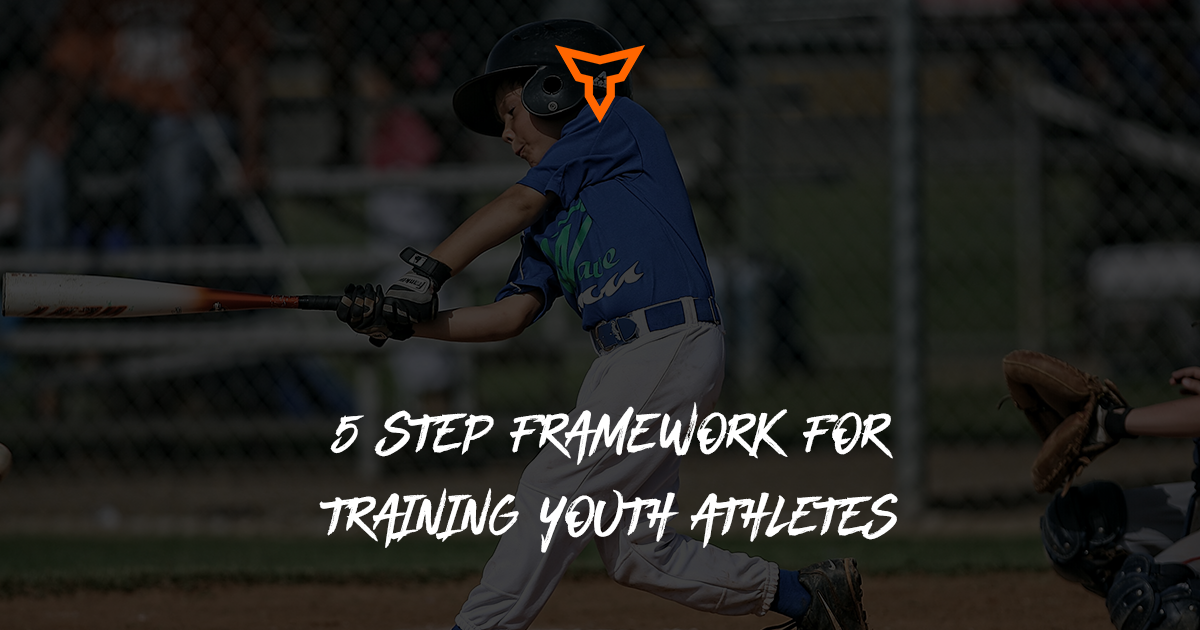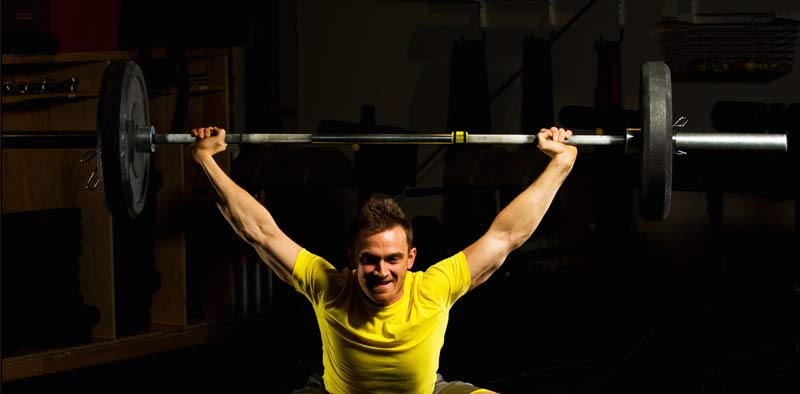Why Track and Field Athletes Need Strength Training
“I wanna go fast” by the Great Ricky Bobby has stood the test of time for athletes of all shapes and sizes, especially those who compete in Track & Field. Why? Because while “speed kills” in soccer and basketball, speed is literally the object of the sport in sprints, jumps, and even throws. So, how does one get faster? Or better yet, how does one get their athletes to be faster?
First, let’s separate Track & Field into three main categories: Sprints, Jumps, and Throws. For this article, I omit the distance crew, not to say they aren’t as important or couldn’t benefit from strength training. I also know vault and multis are somewhere in the middle, but the same principles will apply.
Sprints
Let’s look at sprints. As mentioned, the main goal of sprinting is to go faster than your opponent, for longer than your opponent (or slow down slower than your opponent). As Jon Goodwin and Dan Cleather outline in their book The Biomechanics of Sprinting: Force 2, running velocity comes down to stride length and stride frequency. Stride length can be boiled down into leg length, reach, horizontal takeoff velocity, and flight time. Stride frequency can be broken down into flight time and contact time. (Cleather & Goodwin, 2023)
Fig 1: Kinematic Factors for Sprint Velocity (Cleather & Goodwin, 2023)
Throughout the book, they dive into each variable, but, the main one they explain that we have control over is horizontal takeoff velocity, which comes down to how much force is pushed back into the ground to propel yourself forward. This is an example of Newton’s 3rd Law: For every action, there is an equal and opposite reaction. Push back against the ground and it will push back on you, propelling you forward. The more force you push back with, the faster you will move forward.
Fig 2: Example of Newton’s 3rd Law in Running (Cleather & Goodwin, 2023)
With that little biomechanics lesson, we can see that speed comes down to putting force into the ground (and doing it quickly). This requires high levels of strength. The stronger you are, especially relative to your body weight (relative strength) the more easily you can move your body in space. (Cleather & Goodwin, 2023)
How does one get stronger? By strength training of course! Squats, Lunges, Deadlifts, you name it! The goal of this article is not to outline the perfect program for speed (if such a thing exists), but, to show you that if you are working with Track & Field athletes, then you should be strength training, even in season!
Training strength through lower body movements such as squats, lunges, and step-ups creates stronger muscles that can adapt to the stress of lifting heavier and are now better able to put force into the ground in other biomechanically similar movements (like sprinting). While I won’t argue the “how strong is strong enough” topic, just getting any bit stronger will help with your goal of getting faster (by putting more force into the ground) (Young, McLean, Ardagna 1995). Think of it this way:
If I weigh 150 lbs, but my max squat is 150 lbs, then every step I take down the track is like a max effort for me which means I can’t move as fast (think of how fast you can move a heavy object versus a light one). Now if I strength train and move my max squat up to 250 lbs, my 150 lb body now feels lighter and therefore it takes less energy to move as well as allows me to simply move it quicker (by essence of being able to put more force into the ground).
So that in a nutshell is the reason why we strength train for sprints. We want to generate more force through our lower body to help propel our mass through space toward the finish line faster (by the essence of Newton’s 3rd law).
Jumps
So now what about Jumpers? Same concept (Muthusubramanian, 2013). Every jump starts with a sprint into their takeoff of the jump, so if we once again look into physics, a mass moving at faster speeds when it takes off from the ground will be able to travel further before falling back down from gravity.
Also having the strength to strike the ground on your last takeoff step is key to getting the most out of your run-up, and just like in sprinting, being stronger helps you put more force into the board or track when you takeoff which propels you higher and further.
Throws
Lastly is the Throwers. This one might seem the most obvious to advocate for strength training and I would say that is because it is. Many of our favorite “modern” strength training modalities and periodization schemes come from thrower strength coaches (Verkhoshansky, Bondarchuk, and more).
More specifically, if I need to throw a shot of a set weight (ie. 4kg) and my max bench press is 20kg, if I can increase my strength levels to 35kg, then that 4kg shot (which doesn’t get heavier as I get stronger) feels like a smaller percentage of my max strength which allows me to move it faster. By having a weight move faster, it will go further. How? Because gravity slows the weight down and brings it to earth, just like the jumpers). And since gravity is a constant and therefore doesn’t change (-9.81m/s2 ), if we can have our object (whether the shot, a javelin, or our bodies for jumpers) go up with more speed, it takes longer for gravity to bring the object back down, which means it will fly longer and farther.
Fig 3: Shot Put about to be unleashed (and then stopped by gravity)
Boom. Done. World Records unlocked.
But in all seriousness, before I continue with the physics lecture I would be remiss if I didn’t mention the HUGE caveat to this whole thing - technique. I am a decently strong guy. Our track and field team would smack me in a race or throwing competition. Why? Well first, we could get into genetics, muscle fiber type, etc, but I want to keep it even simpler than that - they know how to throw and sprint better than I do. When they apply the force they have, it is in the right way to make their movements the most efficient and effective to propel them down the track while I hammer the ground over and over again, wasting energy as I go. So yes, strength training is huge for performance. But the best way to ensure that your strength training becomes “sports-specific” is to practice your sport. I like to tell our athletes, “I will make you stronger and faster, it is up to you whether you take those attributes and become a better sprinter or soccer player. It all comes down to what you practice outside the weight room”.
Strength training can be a huge benefit to track and field athletes by allowing them to put more force into the ground or their implement, which moves it faster through space, allowing them/it to travel faster and farther. It also helps reduce injury risk by having more robust tissue to handle the forces experienced in the sport.
Real-life example: Here at Trinity Western we have a solid track and field program run by top-notch coaches. While we are a smaller team (45-50 total athletes male & female), they have recruited and developed athletes that have gone on to win National Championships and even compete internationally for their countries. Like most Track and Field programs, the coaches handled their S&C work for the last few years. It is just how it has always been. I started to consult with them, offer my insights, and show them the value I can bring. This past year they gave me full autonomy of the team in the weightroom. At the time of my writing this we are one week out from our Regional Conference Championships (CanWest Meet), and every weekend we have competed before this there have been numerous PBs and even school records falling.
Now I am not taking full credit for the results, as once again, it largely comes down to the recruiting and sport coach’s process, but I have been able to get them stronger through basic movements like Hand-Supported Squats, DB Bench Press, Step-Ups, and Single Leg RDLs. In my experience, 18-23-year-old kids who have a minimal training background, can make HUGE gains in strength over 3-5 years, which as I have argued, coupled with some good technical training, can do wonders for their development!
So regardless of what age or event you are training for, start picking up some weights because we all “wanna go fast”!
References:
Cleather, D., & Goodwin, J. (2023). The Biomechanics of Sprinting: Force 2; Independently Published.
Subscribe to our blog
Subscribe to receive the latest blog posts to your inbox every week.
Related posts

Compound Training for the Year-Round Athlete: A Strength Coach’s Guide

5 Step Framework for Training Youth Athletes


